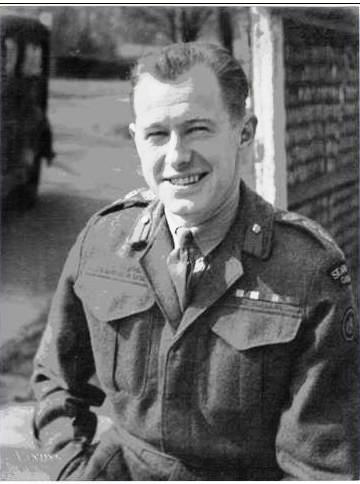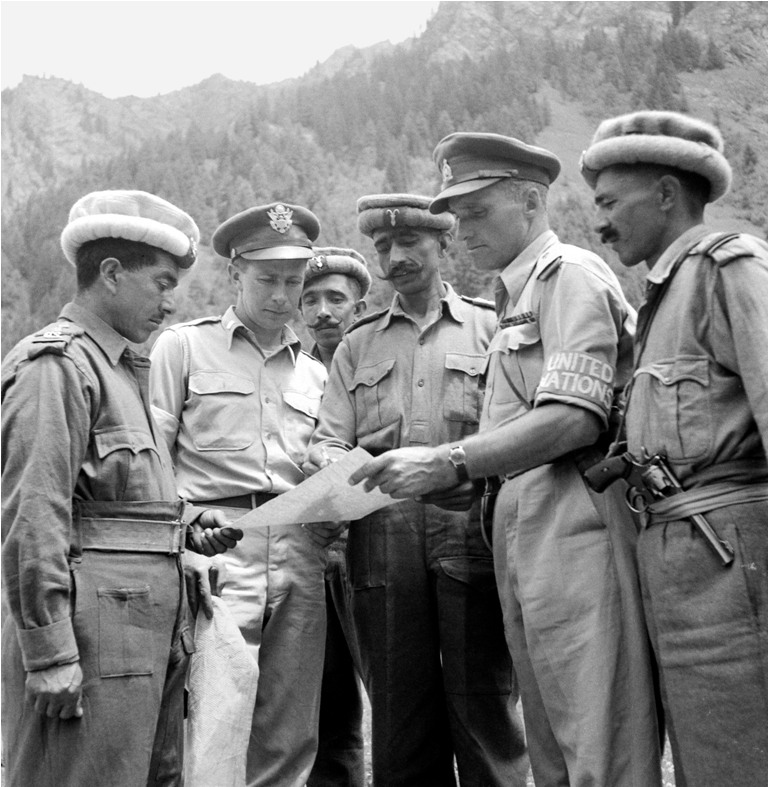Colonel S W “Syd” Thomson (November 14, 1914 – November 8, 2009) was an Australian veteran who was wounded during the war in Sicily. In 1944, almost after 14 years of his service, he commanded an infantry training unit at Aldershot (UK). A year later he headed the Black Watch and volunteered for the Pacifk Force. His next destination was Kashmir as a member of the United Nations Observers Group for India and Pakistan in 1950. In this letter, Syd, as he was usually referred to, details his journey and mentions certain things which are by now forgotten

I am awakened at six by the sound of reveille. No one of spirit who has served as a soldier can fail to be stirred by the sound of a clean, clear bugle call performed by a sensitive soldier of talent. Between the bulges last silver notes and wakeup bed tea the mind is not yet fully alert and lets you relive those moments of high adventure. Without which life would be dull indeed. I am aware of my tawny orderly as, barefooted; he creeps into to retrieve my shoes. Again, a sever, he softly whispers the same song, Larry Ieppo, larry Ieppo, larry Ieppo Ia as he polishes. Minutes later I reach full consciousness with “tea Sahib” and a sparkling grin of ivory in walnut from our happy bearer who’s morning sparkle is infectious. Captain Modugno (Uruguan) groans and shouts good morning and I hear him winding his phonograph for our morning music, rarely of my choice.
And so we are out of bed shaving when we hear the first shrill burst of code from the sigs ‘room. He has opened up for the first sked of the day. There are two special days in each week and this is one of them. Sigs comes in with a message: TO TANGDAR, URI DOMEL.. SDS LEFT 0700 HRS WITH MAIL FOR ALL STATIONS, SRIN. (This is mail from abroad.) Now it is just a matter of filling in time until the jeep arrives. Shaved and dressed we stroll to the mess where we sit down with the local Indian Bn officers. The CO is there, a happy young man who has seen considerable service, being twice wounded, and on another occasion the only survivor of an air crash. The 2ic is also there, Cambridge educated but past his prime and overly fond of the local rum. The QM of thirty-four years and looking eighteen. The Adjutant, bright, friendly and on the way up. After a good breakfast of cornflakes, eggs and French fries, toast honey and coffee, we call our jeep. Incidentally, if you haven’t had French fries cooked in gee the word gourmet is not in your dictionary.
A Wedding
We are off to visit Tangdar. First, we run across a wedding procession, for this is the marriage season when all males who have reached the age of thirteen are contracted in marriage. Their brides are considerably younger. The ceremony takes the form of a parade for men only, up and down the village streets, along the roads and byways of the surrounding country. The local band takes part with all its drums and flutes. The groom, clothed in a white turban and cloak, is mounted on a ridiculously small pony. He may have an overly large sword at his waist.
The noise and I mean noise, goes on for a day or two until everyone is satisfied that everyone else is satisfied that everyone knows of this marriage. Then a dance takes place, the only female dancers present are professionals. After a mighty feast of grain cakes and tea (salt replacing sugar), the groom escorts his bride to his father’s home. Normally he leads the same small pony on which she sits heavily, but colourfully dressed, veiled and shrouded.
If the groom’s father should be wealthy the bride is carried in a well-curtained box suspended on two poles and supported by four coolies. The bride is welcomed into the father’s home and immediately becomes a servant to all in the household. She is required to do all the menial work until, if she is fortunate, a younger son should bring home a bride to share the work. The father will determine when she is old enough to have a family of her own.
The Floating Gardens
We drove along the side of a lake where the farmers were busy repairing their floating gardens. To make a floating garden a long strip of land, usually twenty yards by two is cut off from the side of a swamp containing the matted roots of a bulrush bed. This bed is cut off from underneath allowing a thickness of about two and a half feet to float up. The floating mass is towed to the desired position and anchored.
Mud and fertilizer, in the form of decayed weeds from the bottom of the lake, are heaped on top of this mass and, what do you know, we have a floating garden. These gardens yield tomatoes, cucumbers, melons, etc.
We see women gathering Lotus roots. The lotus has a beautiful pink flower with cup-like leaves. The fruit is eaten in season, (I didn’t get a chance to try it) and the roots are one of the local winter foods. Some are gathering Bulrushes, when green the pulp of the stem and the pollen are eaten, but now they are dry and woven into mats for walls, roofs, floors etc.
Nanga Parbat
Soon we start to climb out of the valley and go up to ten thousand feet over a pass in fresh snow. It is a very clear day and we can see Nanga Parbat (26,642 ft) in the distance. Now we go down all the way down to three thousand feet in the valley of Shangri-La. The road is a nightmare, but our concern is broken by many humorous signs: “WHAT NO BRAKES,” “MAKE A WILL BEFORE ATTEMPTING THE NEXT CORNER”, “YOU MADE IT, JUST WAIT FOR THE NEXT ONE.”

I had my picture taken at the sign “YOU ARE NOW ENTERING THE VALLEY OF SHANGRI-LA, WHOEVER ENTERS HERE WILL NEVER LEAVE” etc. Once down in the valley, we had to remove our heavy clothing, as it was truly warm. The locals were winnowing and grinding their grain. The grain is thrown into the air with long paddles and the breeze carries the chaff away, as I suppose it was done everywhere in earlier times. The grinding, or more correctly pounding, mills in this valley are, I think, quite unique. The mill is constructed in this manner. A log forms the axle embedded in rocks at either end. These rocks work as bearings. Near one end of this log, that spans a stream, stakes or paddles are driven into it to form a water wheel. Near the other end of the log is one spur, or thick short branch stub. As the axle rotates the spur strikes one end of a pole that is fulcrumed in the centre and is at a right angle to the axle. A stone is lashed to the far end of the pole. The waterwheel turns the axle, every time the spur strikes the pole the rock at the other end is lifted and let drop. It drops on another larger stone and crushes the grain-fed by dexterous hands to become a coarse flour.
We had a haversack lunch at the Kishingonga River which flows into the Jhelum which in turn joins the Indus. After a grand day, we made our way back over the pass to find a sign at the bottom, “WHAT STILL ALIVE? COME BACK IN THE WINTER.”















